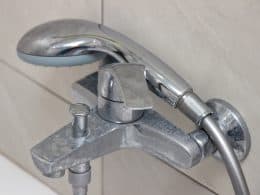If you have home movies stored on VHS tapes, you should consider following the digitization process to transfer vhs to digital. This is the best way to preserve your memories for the future.
Breaking major IT upgrades into byte-sized projects enables agile experimentation, minimizes risk, and delivers faster return on investment. This allows stakeholders to see value sooner, fostering ongoing support for new initiatives.
1. Save Space
VHS tapes enjoyed a remarkable longevity that made them the dominant home video format for over 40 years, but that longevity is now coming to an end. As VHS tapes age, their quality declines and they may become unplayable. Fortunately, there is a simple way to protect your precious memories and make them last longer: converting your tapes to digital.
VHS to digital conversion can be done using DIY converter equipment or a service like Capture. These services can save you time and money while providing a premium quality result. But before you make the investment, it’s important to understand the process so that you can choose the best option for your needs.
Converting your old analog tapes to digital formats will give them a new lease on life, preserving the images and sounds exactly as you remember them for generations to come. It will also make them more accessible and easier to play back on modern devices. Digital versions are also much less vulnerable to damage caused by humidity, fires, flooding, and other environmental factors.
Digital video files are easy to store and share. They can be stored on a USB drive for portability and ease of use, or they can be uploaded to a cloud storage service for access from any device with an internet connection. Digital formats can also be backed up to another source, such as a DVD, if you want to preserve the physical media.
A common misconception is that a megabyte (MB) has the same meaning as a byte. The difference is that a byte represents eight bits of data, whereas a megabyte represents 1,048,576 bytes.
This difference can be confusing for those who are not familiar with computer programming or data storage. In order to avoid this confusion, it’s important to understand the difference between a byte and a megabyte before making any conversions. Otherwise, you could end up with an unexpected result. For example, you could end up with a file that is too large for your storage system, or you might not have enough space to store all of your digital files.
2. Protect Your Memories
If you want to keep your memories safe for years to come, it’s important to regularly back up and protect them. This is especially true if you are storing precious images or video from events like weddings, graduations, birthdays, or family vacations. Follow the 3-2-1 rule of making at least 3 copies of your data, 2 on different media (like an external hard drive and the cloud) and 1 offsite copy (e.g. in a bank safe-deposit box or at a friend’s house).
Digital files take up a lot of space, so it is important to understand how much room your memories will take before digitizing them. This will help you estimate how many MBs, GBs or even TBs you’ll need to store them.
You may also be able to find a storage site that allows you to upload your digital memories for duplication and safekeeping. Just make sure you know the privacy policies of these sites, as some will not be secure enough to keep your high-resolution photos and videos safe. Remember to always label and organize your memory cards so that you can quickly find the content you are looking for.
3. Access Your Content Anywhere

Whether you are at home, work or on the go, you can access your pictures, music, videos and documents from any device that has the Frontier Secure Content Anywhere app or is connected to your computer through the desktop client. You can also view your Sync folder contents and change settings from the Content Anywhere Dashboard. You can even create a public link to share files with others by clicking the Summary tab and selecting Share Files.
4. Share Your Memories
After a brief battle with Betamax to become the top home recording and viewing format in the early 1980s, VHS tapes became an omnipresent part of many homes. Whether it was for the comfort of watching a beloved movie again or the ease of capturing family memories on hand-held camcorders, VHS players were the go-to choice for years. But with the invention of sturdier, higher-quality digital formats and advances in technology, VHS tapes eventually fell out of favor. Sadly, that means that most people’s cabinets are filled with stacks of VHS tapes that aren’t playing any longer — or worse, are slowly degrading away.
Converting your videos to digital can be a great way to preserve your memories and keep them accessible in the future. You can then store them on your computer, in the cloud, or on a hard drive, where they’ll be protected from disasters like fires and floods. Plus, you can easily access your digital videos on any device, anytime.
But while it is possible to convert your videotapes at home, it’s important to remember that doing so requires a fair amount of time and attention to detail. Unless you’re a computer professional, you’ll likely want to hire a company that specializes in transferring old media to digital for you. Here at iMemories, we’re dedicated to making the process as simple and stress-free as possible for our customers. We have a dedicated team of digitization experts, and our SafeKit packaging ensures that your memories are safely and securely shipped to us for digital conversion, while also protecting them from damage during the process.
We provide a wide range of digital file types to fit your preferences, including DVDs and Blu-rays. You can even choose to have your files delivered directly to you via USB, giving you the option of storing them on a hard drive or in the cloud for easy accessibility in the future.
Don’t wait another day to get your old videotapes converted to a digital format. Not only will you risk losing the footage of your kids’ toddler self-haircuts, home run swings, and pillow fights, but the tape itself can degrade by up to 20% every 10 years.





